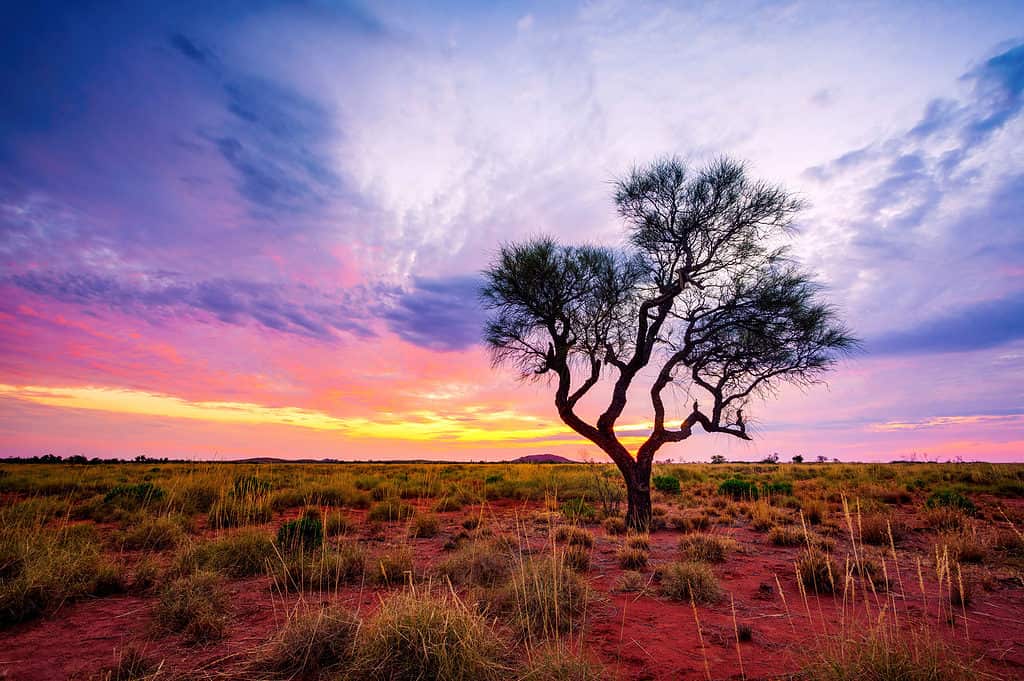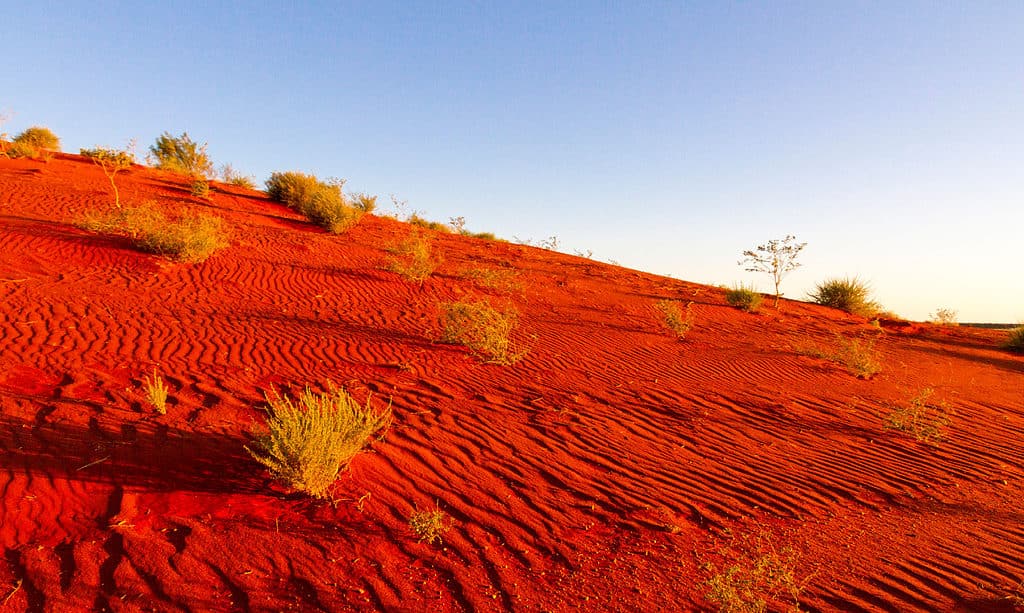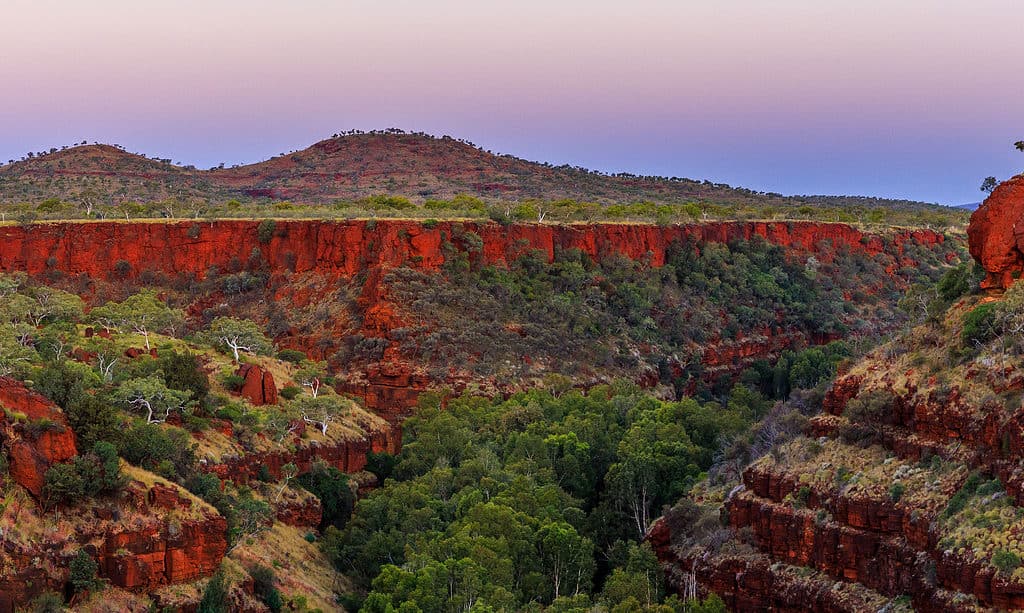Over the years, a lot of fascinating fossils and artifacts have been found all over the world, showing the timeline of events since the beginning of the earth’s existence. All of these interesting prehistoric animals and artifacts make us wonder how old the earth is and what part of it is the oldest. Where do you think the oldest place in the world is? This article looks to answer this question, as well as provide exciting facts you probably didn’t know about.
Where is the Oldest Place on Earth?

©bmphotographer/Shutterstock.com
According to expert findings, the earth is around 4.5 billion years old. This fact was possible to determine through a method called isotopic dating, helping scientists make estimates of the ages of different samples based on the results of radioactive changes. This method is primarily used in geology and archeology and has been used in determining the oldest place on earth- the Pilbara region in Western Australia.
North of Western Australia is the Pilbara, a sizable, arid area with a sparse population. The Pilbara area of Western Australia is home to the fossilized remains of the planet’s earliest life forms. Because of the discoveries made in the area, it has been declared the oldest place on Earth. It is well-known for its Aboriginal population, historic landscapes, red soil, enormous mineral riches (particularly iron ore), and as a worldwide biodiversity hotspot for subterranean wildlife. The majority of the inhabitants, as well as most of the region’s industry and commerce, reside in the western portion of the area. At the same time, the eastern part is primarily made up of desert and is sparsely populated by a small number of Aboriginal peoples.
The area has an estimated population of just little over 61,000 people and covers an area of 196,100 square miles. It has a variety of landscapes, including coastal plains, mountain ranges with cliffs and valleys. It also has some of the planet’s oldest rock formations. Iron ore, petroleum, and natural gas resources are also present there, all of which have an enormous economic impact on Australia.
How Old is the Oldest Place on Earth?

Pilbara is about 3.6 billion years old.
©Darkydoors/Shutterstock.com
The Pilbara region began to form more than 3.6 billion years ago. According to scientists, all red rocks in the area were produced around 3.4 billion years ago, prior to the oxygen disaster. The massive iron-rich rock formations of the Pilbara, which were built before oxygen and life as we know it existed, are the best-preserved examples of the planet’s oldest crust, according to scientists. Experts believe that the surface of the Pilbara and other global iron deposits in the world formed at a similar time. However, the surface of the Pilbara stands out because, unlike the others, it has remained unburied and unaffected by geologically devastating events.
Experts have discovered that the rocks of the Pilbara are so old that there are no fossils found within them, but fossils of the earth’s oldest lifeforms cover the surface of the rocks. This means the region predates even the earth’s oldest lifeforms. Additionally, the Pilbara is one of just two locations on Earth where marine stromatolites are still alive. Because of how much knowledge the Pilbara has to offer concerning life before humans, it was visited by NASA scientists to better prepare them for their journey to Mars. Apart from the fossils in the region, the rocks in the Pilbara region also have a similar scientific chemical composition to the rocks on Mars.
Where is the Oldest Place on Earth Located on a Map?
The Pilbara is a region of Western Australia known for its ancient red soil and rocks that are 3.4 billion years old, pre-dating the formation of oxygen. The region borders the Indian Ocean to the west, north, and south, and the Northern Territory of Australia and South Australia to the east.
Is the Pilbara Open to Tourists?

Tourism in Pilbara is a significant contributor to the economy, bringing in $413 million in gross revenue annually.
©Ryan Hoi/Shutterstock.com
With more than one million tourists in the region each year, tourism is a significant contributor to the economy, bringing in $413 million in gross revenue annually. The Pilbara, which makes up about 20% of Western Australia’s total land area, is a vast, diversified area of mountain ranges with deep, breathtaking gorges, deserts, plains, a gorgeous coastline, and several offshore islands. All of these areas attract tourists to the region, making the usual empty valley of red rocks lively at certain times of the year.
The Pilbara is awe-inspiringly beautiful and catches the imagination of tourists from all over the world. Still, it can also be extremely harsh and dangerous for those who are not adequately prepared. One part of the region that attracts the most people is Karijini National Park.
The canyons at Karijini provide geologists with unmatched access to naturally dug cross-sections of stratified rock that provide valuable information about the earth at the time this ancient region was developed.
Not only is Karijini a top-notch tourist destination, but it also has cultural significance for the people, with some areas of the park designated as being exclusively for women and others as being solely for males. However, the inhabitants of the site are very friendly and accommodating, and as such, tourists are welcome and can take pictures. Even while tourists are still allowed in the area, it is still important to observe a sense of decorum and respect for the area. The locals in the area also run a resort that is open to tourists that want to stay overnight. The region is beautiful not only during the day but also at night.
The photo featured at the top of this post is © Darkydoors/Shutterstock.com
Sources
- BBC Travel, Available here: https://www.bbc.com/travel/article/20220126-is-the-pilbara-the-oldest-place-on-earth
- Daniel Leonard, Available here: https://www.grunge.com/767110/is-this-australian-region-the-oldest-place-on-earth/
- Chrissy Sexton, Available here: https://www.earth.com/image/the-pilbara-craton-contains-some-of-the-oldest-rocks-on-earth/
Thank you for reading! Have some feedback for us? Contact the AZ Animals editorial team.






